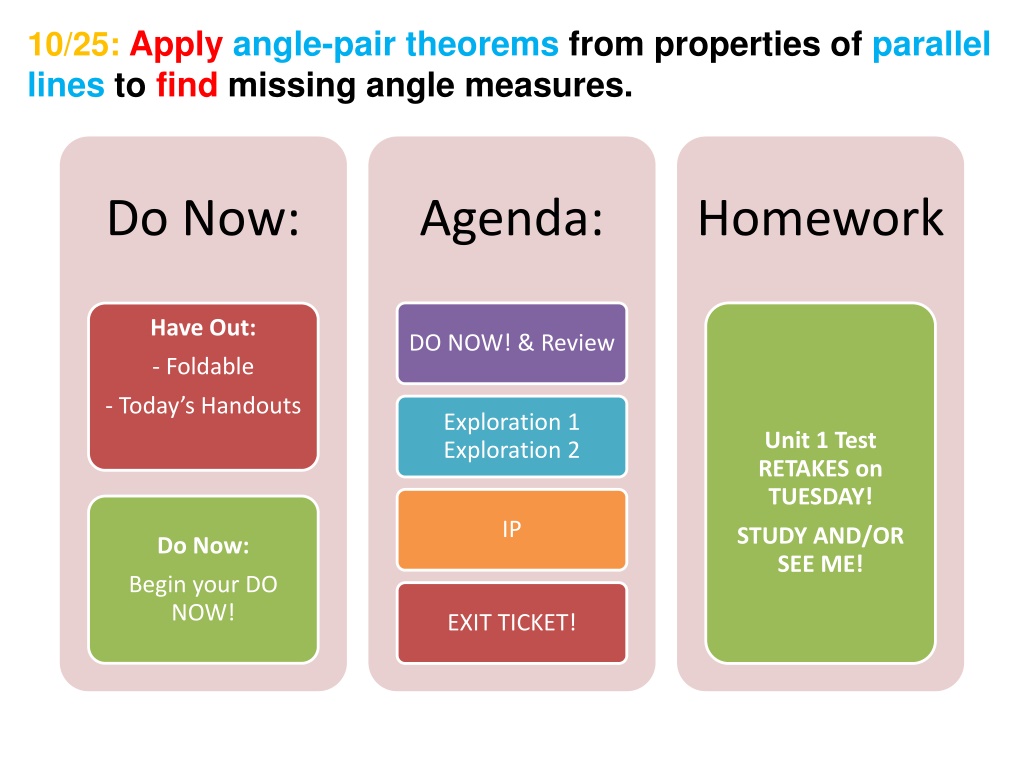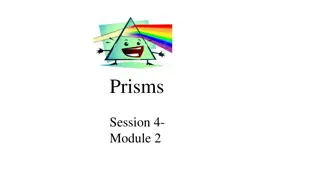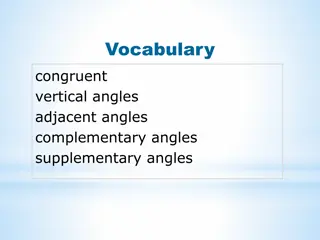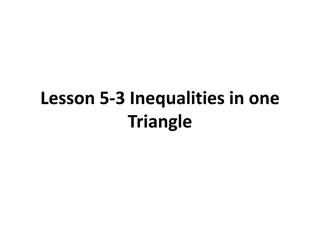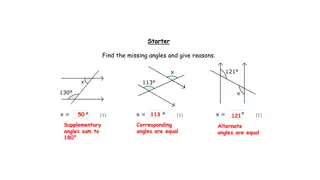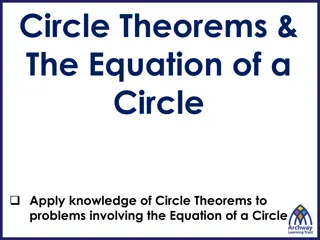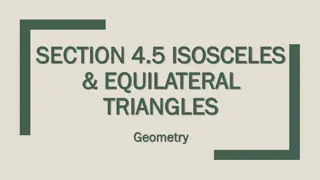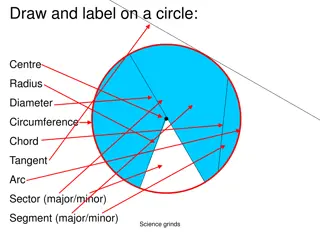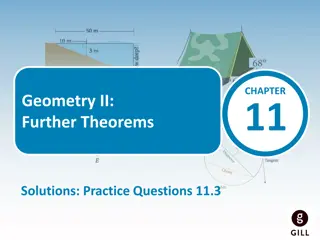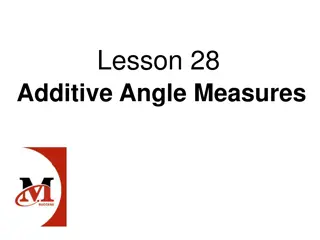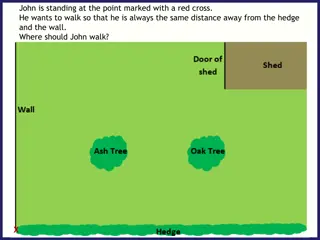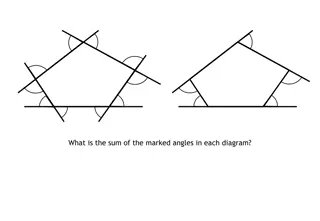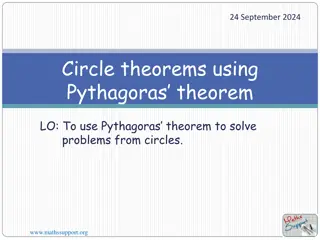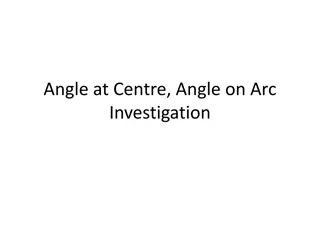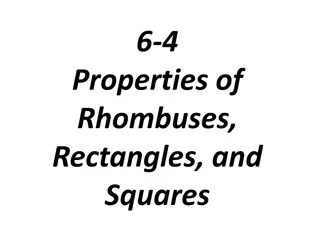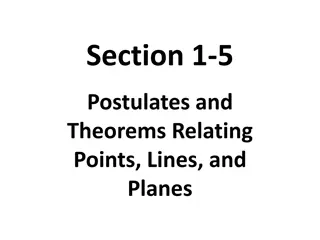Angle Pair Theorems in Geometry
Explore the application of angle-pair theorems in finding missing angle measures using properties of parallel lines. Learn about different types of angle pairs such as vertical angles, corresponding angles, same-side interior angles, alternate exterior angles, and more through engaging activities and explorations. Enhance your knowledge by naming angle pairs, measuring angles with a protractor, and identifying angle relationships in various geometric figures.
Download Presentation

Please find below an Image/Link to download the presentation.
The content on the website is provided AS IS for your information and personal use only. It may not be sold, licensed, or shared on other websites without obtaining consent from the author.If you encounter any issues during the download, it is possible that the publisher has removed the file from their server.
You are allowed to download the files provided on this website for personal or commercial use, subject to the condition that they are used lawfully. All files are the property of their respective owners.
The content on the website is provided AS IS for your information and personal use only. It may not be sold, licensed, or shared on other websites without obtaining consent from the author.
E N D
Presentation Transcript
10/25: Apply angle-pair theorems from properties of parallel lines to find missing angle measures. Do Now: Agenda: Homework Have Out: DO NOW! & Review - Foldable - Today s Handouts Exploration 1 Exploration 2 Unit 1 Test RETAKES on TUESDAY! IP STUDY AND/OR SEE ME! Do Now: Begin your DO NOW! EXIT TICKET!
Warm-Up Answers 6 and 10 ------------ Same-Side Interior Angles Vertical Angles Corresponding Angles Alternate Exterior Angles Corresponding Angles Same-Side Interior Angles Vertical Angles Linear Pair Can you identify the old angle-pairs we have learned?
Warm-Up Answers 2 & 7 3 & 6 1 & 8 5 & 4 2 & 3 6 & 7 1 & 3 2 & 4 2 & 5 1 & 6
We will learn to: - Apply angle-pair theorems from properties of parallel lines to find missing angle measures.
What are the 4 old angle-pairs we have talked about? Complementary Angles Supplementary Angles Linear Pair Vertical Angles Let s add these to our foldable
Exploration 1: Name the angle pair. Use a protractor to give the measure of each angle. _________________________ See below for angle measures 127 53 53 127 136 44 44 136
Linear Pair 127 53 Vertical Angles 127 127 Corresponding Angles 127 136 Same-Side Interior Angles 127 44 Alternate Interior Angles 53 44 Alternate Exterior Angles 53 44
See below for angle measures ------------------------------------------------------------------------- Exploration 2: Use a protractor to find measure of each angle and label it on the diagram below. Then fill in the table. 126 54 54 126 126 54 54 126
Linear Pair Supplementary 126 54 Vertical Angles Congruent 126 126 Corresponding Angles 126 126 Congruent Same-Side Interior Angles Supplementary 126 54 54 54 Alternate Interior Angles Alternate Exterior Angles Congruent Congruent 54 54
Summary Question: Do the lines above have to be parallel in order for you to identify an angle-pair? No, angle-pairs exist when two lines (parallel or not parallel) are cut by a transversal.
Summary Question: Do the lines have to be parallel for the measurement relationships to exist? Yes, in order to find ALL missing angle measures, the lines must first be parallel.
Example A: Double Arrow = || Lines = Can Apply Theorems/Postulate If parallel lines are cut by a transversal, then all angle pairs are either ____________ or ______________. supplementary congruent
Theorems / Postulate 1 3 1 and 8 Vertical Angles Theorem Same-Side Interior Angles Theorem 2 6 Alternate Exterior Angles Theorem Linear Pair 7 and 6 1 7 Corresponding Angles Postulate 8 4 Alternate Interior Angles Theorem
Example B: If m2 = 96, then find the measures of each angle below if possible. Possible when given || Lines 84 Linear pair 84 Vertical Angles Theorem Linear pair 96 Alternate Interior Angles Theorem 84 Corresponding Angles Postulate Alternate Exterior Angles Theorem 96 96 Alternate Exterior Angles Theorem 84
